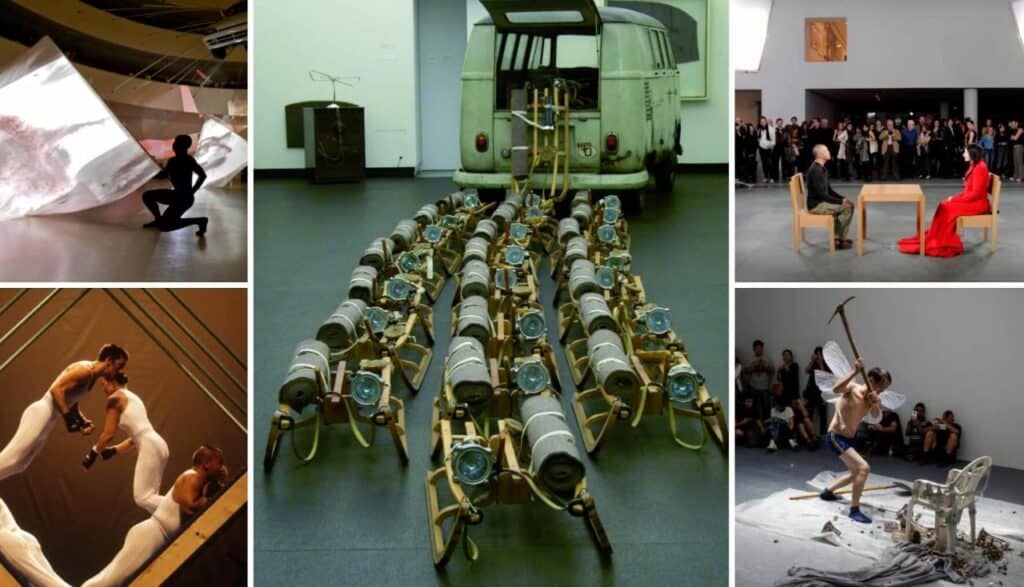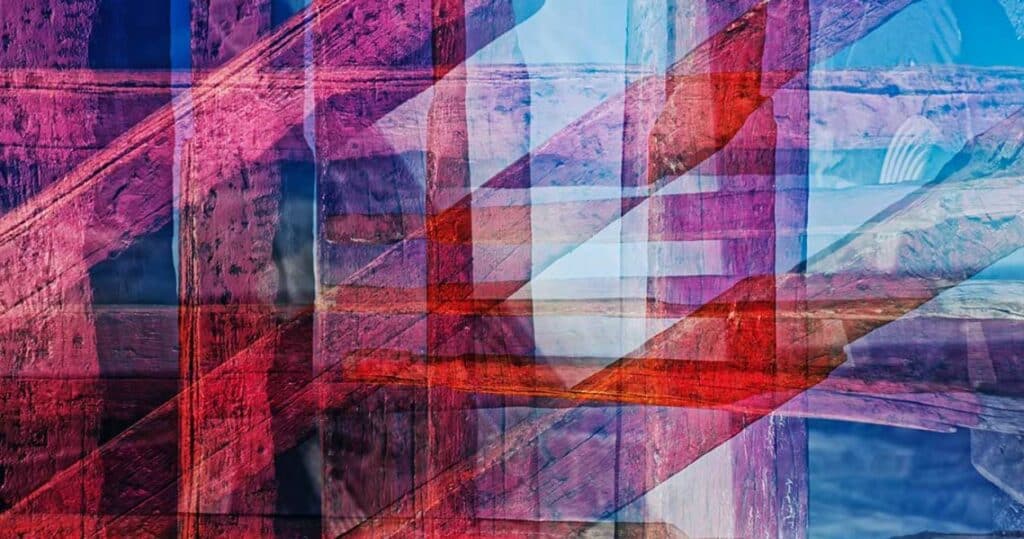Welcoming you to the enthralling realm of performance art, where imagination has no limits and artists push the boundaries of expression through live acts, we hope you enjoy your time here. The audience is invited to participate in a sensory experience that extends beyond the limitations of a painting or a stage when viewing performance art, which is a distinctive type of art that goes beyond traditional bounds. In this article, we will look into the works of ten performance artists who are changing the landscape of contemporary art, questioning perceptions, and engaging spectators in thought-provoking ways. These artists are transforming the landscape of contemporary art in a variety of different ways.
They encourage us to find inspiration in the ordinary by challenging us to see the familiar in a new light through the use of inventive interpretations and techniques that push the boundaries of what is considered possible. They are leaving an everlasting mark on the modern art world, inviting us to investigate the depths of human perception and creativity as they continue to alter the classic still-life genre.
10 Performance Artists Who Are Changing the Way We Think About Art
Step into a world where the frontiers of art are stretched and traditional ideas of creation are left in the dust, and allow yourself to be immersed in this domain. Welcome to the fascinating realm of performance art, in which the artists use their own bodies, time, and space as their canvas to create experiences that are both immersive and thought-provoking. During this investigation, we will delve into the interesting works of ten performance artists who are not only working to change the way things have always been done, but who are also redefining the very essence of how we experience and engage with art.
1. Marina Abramović

Marina Abramović is a performance artist from Serbia who is known for exploring the bond between the artist and the audience in her work. It was her 2010 work “The Artist is Present” that made her famous. For that piece, she sat still in the Museum of Modern Art for 736 hours and let people sit across from her for as long as they wanted.
Key Aspects: Marina Abramović
| Aspects | Description |
| Style: | Known for durational performances that explore the relationship between artist and audience, |
| Notable Work: | “The Artist is Present” at MoMA, where Abramović sat silently for 736 hours, engaging with visitors. |
| Themes: | Focuses on the limits of the body, the passage of time, and the intensity of human connection. |
| Influence: | Considered a pioneer in performance art, often referred to as the “grandmother of performance art.” |
2. Chris Burden

He was an American performance artist named Chris Burden. His work was often very dangerous and dramatic. He is best known for “Shoot” (1971), in which he was shot in the arm with a gun, and “Trans-Fixed” (1974), in which he was nailed to a Volkswagen Beetle.
Key Aspects: Chris BurdenDescription
| Aspects | Description |
| Style: | Renowned for extreme and risky performances that challenge societal norms, |
| Notable Work: | “Shoot” (1971), where Burden had himself shot in the arm, exploring the boundaries of personal danger. |
| Themes: | Examines the relationship between the individual and authority, often confronting the audience’s comfort zones. |
| Legacy: | A key figure in the development of conceptual and performance art in the 1970s. |
3. Carolee Schneemann

The American performance artist Carolee Schneemann was known for her work that looked at the body and sexuality of women. Her most famous works are “Up to and Including Her Limits” (1973) and “Interior Scroll” (1975), in which she put a long roll of paper into her vagina and read from it out loud.
Key Aspects: Carolee Schneemann
| Aspects | Description |
| Style: | Groundbreaking feminist performance artist, challenging traditional notions of the female body. |
| Notable Work: | “Interior Scroll” (1975), where Schneemann unraveled a scroll from her vagina, addressing gender and sexuality. |
| Themes: | Explores the intersection of personal and political, often incorporating her own body as a canvas. |
| Impact: | Influential in shaping feminist art and performance art, challenging art’s patriarchal conventions. |
4. Joseph Beuys

Joseph Beuys was a German performance artist whose work often looked at magic, change, and fairness in society. To make his performance piece “How to Explain Pictures to a Dead Hare” (1965) famous, he whispered in the ear of a dead hare for three hours while covered in honey and fat. In his performance piece “7000 Oaks” (1982), he planted 7,000 oak trees in Kassel, Germany, one for every person who died in the Holocaust.
Key Aspects: Joseph Beuys
| Aspects | Description |
| Style: | Known for ritualistic performances using symbolic materials and often involving audience participation, |
| Notable Work: | “How to Explain Pictures to a Dead Hare” (1965), where Beuys covered his head with honey and gold leaf. |
| Themes: | Explores healing, transformation, and the interconnectedness of all things. |
| Legacy: | A significant figure in the Fluxus movement, impacting conceptual and performance art globally. |
5. Laurie Anderson

The American performance artist Laurie Anderson is known for putting together music, video, and technology in her work. Her 1981 song and video “O Superman” are what she is most famous for. It’s about a love story between a robot and a person.
Key Aspects: Laurie Anderson
| Aspects | Description |
| Style: | Experimental and interdisciplinary artist, combining music, spoken word, and technology in her performances. |
| Notable Work: | “United States” (1983), a multimedia performance art piece exploring American culture and politics. |
| Themes: | Integrates technology and storytelling to comment on contemporary society and human experience. |
| Influence: | A key figure in avant-garde music and performance art, known for pushing artistic boundaries. |
6. Yoko Ono

Performer Yoko Ono is a Japanese-American artist who is known for her work that deals with peace, love, and social justice. Her 1964 performance piece “Cut Piece” made her famous because she asked people in the crowd to cut off pieces of her clothes.
Key Aspects: Yoko Ono
| Aspects | Description |
| Style: | Conceptual and avant-garde artist, known for her participation in the Fluxus movement. |
| Notable Work: | “Cut Piece” (1964), where Ono invited the audience to cut pieces of her clothing, exploring vulnerability and trust. |
| Themes: | Addresses peace, feminism, and human connection in her works, often engaging the audience in participation. |
| Impact: | A major influence in conceptual and performance art, known for her collaborations with John Lennon. |
7. Yves Klein

If you know Yves Klein, you may know him for his work with the color blue. His 1960 work, “Anthropometry,” is what he is most famous for. In it, he painted naked models blue and had them roll around on big panels, leaving marks that looked like people.
Key Aspects: Yves Klein
| Aspects | Description |
| Style: | Influential French artist associated with Nouveau réalisme, known for his use of color and minimalistic aesthetics. |
| Notable Work: | “Anthropometry of the Blue Period” (1960), where naked women painted canvases with International Klein Blue using their bodies. |
| Themes: | Focuses on the intersection of art and the human body, often using unconventional materials. |
| Legacy | A pioneer in performance art and a precursor to minimalism, leaving a lasting impact on contemporary art. |
8. Allan Kaprow

Performance artist Allan Kaprow was from the United States. He was known for making work that mixed art and real life. He is most famous for his works called “Happenings,” in which he asked people to do different things, like eat, play games, and look around a place.
Key Aspects: Allan Kaprow
| Aspects | Description |
| Style: | Considered the originator of the term “happening,” a precursor to performance art. |
| Notable Work: | “18 Happenings in 6 Parts” (1959), a seminal work that marked the beginning of the Happening movement. |
| Themes: | Emphasizes viewer participation, blurring the lines between art and everyday life. |
| Legacy: | A central figure in the development of performance art, influencing subsequent generations of artists. |
9. Lygia Clark

Lygia Clark was a performance artist from Brazil who was known for exploring the connection between the artist and the audience in her work. She is best known for her “Bichos” pieces, which she made from 1960 to 1963 and were small statues that people could interact with and move around.
Key Aspects: Lygia Clark
| Aspects | Description |
| Style: | a Brazilian artist associated with the Neo-Concrete movement, known for her participatory and sensorial works. |
| Notable Work: | “Bichos” (1960), interactive sculptures that invite viewers to manipulate and rearrange the geometric forms. |
| Themes: | Explores the relationship between art and the viewer, often emphasizing tactile and immersive experiences. |
| Impact: | A significant figure in Brazilian and international art, challenging traditional notions of sculpture and participation. |
10. Tino Sehgal

As a performance artist, Tino Sehgal is known for making work that only lives in the present. When he worked on “This is Propaganda” (2002–2005), he hired performers to give personalised speeches to gallery visitors. When he worked on “These Associations” (2012), he hired performers to sing songs about how people in a place relate to each other.
Key Aspects: Tino Sehgal
| Aspects | Description |
| Style: | Conceptual artist known for creating “constructed situations” without traditional art objects. |
| Notable Work: | “This Situation” (2007), a live experience involving interpreters engaging with visitors in a museum. |
| Themes: | Focuses on the ephemerality of art, the nature of human interaction, and challenging the commodification of art. |
| Influence: | A pioneer in the realm of “live art,” influencing the turn towards experiential and participatory art practices. |
Not only the artists themselves are responsible for making waves in the world of contemporary art, but art curators also play an essential part in the process of forming this landscape. These people working behind the scenes are the ones who are responsible for bringing remarkable works of art to the attention of the general public, for shaping trends, and for supporting the overall growth of the art world.
Performance art is a media that continues to be one that is both evolving and dynamic, and it continues to push audiences to engage with art in ways that go beyond the typical experience of going to an art gallery. The ten artists who are highlighted in this piece are merely a representative cross-section of the expansively expansive and intellectually challenging field that is performance art. As these artists continue to test the boundaries of expression, they inspire us to reexamine our own perspectives and widen our understanding of what constitutes art.
FAQ
What exactly is performance art?
Performance art is a type of artistic expression that consists of live acts or events by artists, which frequently include components such as body movements, gestures, spoken words, and interactions with the audience.
What distinguishes performance art from other types of art?
Unlike traditional art forms such as painting or sculpture, performance art is transitory and time-based. It frequently emphasises the artist’s presence and direct interaction with the audience
Are there any common themes explored in performance art?
Themes in performance art vary greatly, but many artists tackle concepts such as identity, gender, politics, and the artist-audience interaction. The medium’s ability to address a wide range of social and cultural issues is reflected in the variety of themes.





